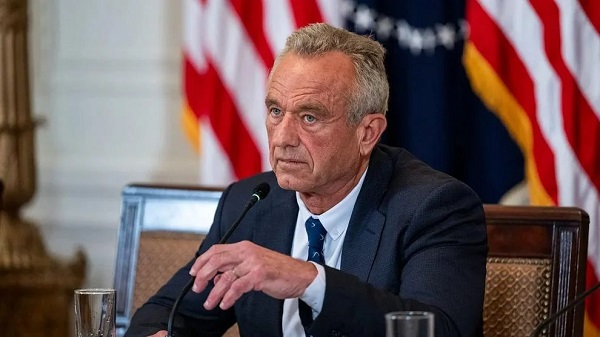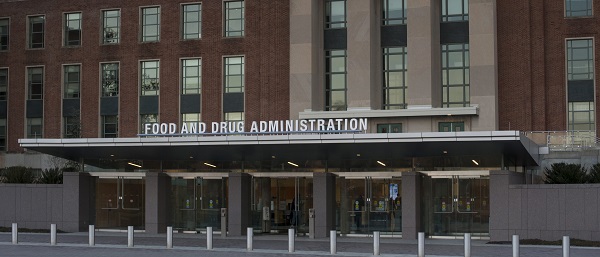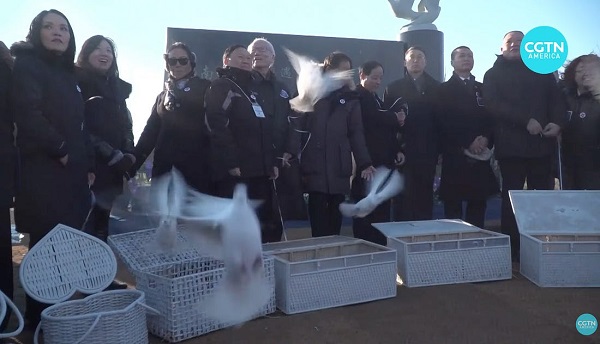Opinion
The federal government wants Canadians to eat bugs.
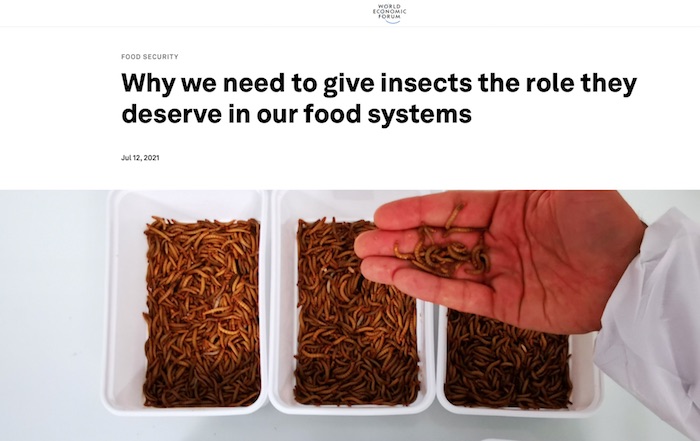
A few (very few) media outlets have picked up on this recent news release from the Canadian Taxpayers Federation regarding the human consumption of.. Bugs!
Yuck right? Well don’t panic. They’re not quite ready to swap your bowl of Count Chocula for cocoa-flavoured crickets just yet. However it does appear the Liberal government is hoping to put bugs on your menu. The article from the CTF is included below so I urge you to read on because it’s really interesting (and for those with a queasy stomach, just a tad disturbing).
But before you do that, a couple of observations.
First. This is NOT another win for the annoying conspiracy theory people. Sure they may have been spouting off about forcing us to eat bugs, but that doesn’t make this a classic conspiracy theory.
When it comes to conspiracy theories, most of us have always concluded there are just two types of people. There are the KOOKS. And then there are the people who do their best to avoid the kooks. Let’s call the first group the Flat Earthers, and the second group, Everyone Else (or the Rest of Us if you please).
Flat Earthers use evidence no one can verify to draw ridiculous conclusions and make strange accusations. Governments insisting we eat bugs may sound like a ridiculous conclusion formed by evidence no one can verify, but it turns out this is not the case at all.
Why is it that “The Liberal Government Wants Us To Eat Bugs” is not a ‘classic’ conspiracy theory?
Well it’s because of the words ‘conspiracy’ and ‘theory’. They just don’t apply.
The Oxford Dictionary defines conspiracy as “a secret plan by a group of people to do something harmful or illegal.” For one thing there’s nothing illegal about adding bugs to our diet. We’ve never had to make a law about it. Politicians like getting elected, and so it never occurred to them to force bugs onto our plates. Sure you’ll see them flipping pancakes and picking hot dogs off a bbq, but that’s about as ‘harmful’ as they’re willing to get. So there’s nothing illegal and nothing harmful going on. That leaves the part about being a secret.
To prove this isn’t a secret I’m afraid I’m going to have to put 2 and 2 together because we have to talk about the World Economic Forum. They might not be shouting it from the mountaintops, but the World Economic Forum isn’t hiding the fact they’d like us to replace meat protein with bugs. It’s only a secret if you’ve never taken the time to read “Why we need to give insects the role they deserve in our food systems“, or “5 reasons why eating insects could reduce climate change“.
You might think our trusted sources of information would look into this because food is something their readers tend to eat almost every day. Sometimes more than once. They might not even have to go to Davos to check it out. News reporters bump into Deputy PM Chrystia Freeland in the hallways on Parliament Hill all the time. Chrystia Freeland is on the World Economic Forum Board of Trustees If you click the link you can see her there, third person down on the right. If Deputy PM Freeland doesn’t know where to find these articles on the WEF website, as a Board of Trustee member she’ll know who to ask. So this certainly isn’t illegal or particularly harmful, and it’s only a secret to those who don’t read these things or have these things read to them by the information sources we’ve always trusted. The Liberal government might not talk about sharing goals with the WEF every day, but when Canada’s Deputy PM is on the WEF’s Board of Trustees let’s just say it would be odd to think they’re at odds.
The other word in play here is “theory”. When it comes to “conspiracy theory”, the word theory means “theoretical”, as in a theory, but not really happening. Again with the Oxford, second meaning applies here, “that could possibly exist, happen or be true, although this is unlikely”.
One could make a weak argument that Canada’s Deputy PM only goes to Davos to exchange stories with the rich and famous about how ridiculously hard it is to drive the speed limit in Alberta. One ‘theory’ is that she had to make it all the way back to Ottawa in an EV before it got cold. Regardless. Canada’s Deputy PM is a member of the WEF Board of Trustees. So although it could be a coincidence, it is not a theory that the federal government is funding bug – food research. As you’ll see below, the liberals are paying companies to ” promote the consumption of “roasted crickets” or “cricket powder” mixed-in with your morning bowl of cereal. ”
The fact the WEF has been talking about this for years now, the fact our Deputy Prime Minister is on the WEF Board of Trustees, and the fact the federal government is now funding research meant to change Canadians from people who stomp on bugs into people who chomp on bugs.. Well that pretty much takes the theoretical part right out of it.
Now that you’re hungry for more, here is the news release from a new trusted information source, the CTF.
By Ryan Thorpe of the Canadian Taxpayers Federation
Taste the crunch: cricket corporate welfare cost $420K

Bon apétit.
The federal government spent $420,023 since 2018 subsidizing companies that turn crickets into human food.
“Canadians are struggling as inflation pushes up grocery bills, but subsidizing snacks made out of bugs doesn’t sound like the right solution for taxpayers,” said Franco Terrazzano, CTF Federal Director. “If Prime Minister Justin Trudeau wants to take a bite out of crunchy crickets, he can do it without taking a bite out of taxpayers’ wallets.”
The Canadian Taxpayers Federation gathered the list of cricket corporate welfare deals by reviewing the federal government’s proactive disclosure of grants and contributions.
On two separate occasions, the feds cut cheques to a Montreal-based company called NAAK Inc., for a combined cost to taxpayers of $171,695.
The co-founders of NAAK were “introduced … to the benefits of adding insects to (their) diet” by a friend and describe their mission as “democratizing insect consumption.”
NAAK specializes in “cricket energy bars,” but a portion of its corporate welfare money was earmarked for developing other cricket products, including “steaks, sausages and falafels.”
NAAK is one of five companies producing crickets for human consumption that have received corporate welfare deals from the feds in recent years.
Table: Corporate welfare deals, 2018-2022
|
Company |
Number of subsidies |
Total cost of subsidies |
|
NAAK Inc. |
2 |
$171,695 |
|
Entologik Inc. |
2 |
$88,979 |
|
Prairie Cricket Farms |
2 |
$78,349 |
|
Gaia Protein |
1 |
$42,000 |
|
Casa Bonita Foods |
1 |
$39,000 |
Casa Bonita Foods wants to “manufacture high protein snacks made with cricket flour,” while Prairie Cricket Farms promotes the consumption of “roasted crickets” or “cricket powder” mixed-in with your morning bowl of cereal.
The founder of Entologik claims insects are the “protein of the future” and wants to grow the company into “the largest producers and processor of edible insects in Canada.”
“The feds are having their ‘let them eat crickets’ moment,” Terrazzano said. “If someone can sell crickets as food, we wish them the best of luck, but taxpayers shouldn’t be paying for it.”
An additional $8.7 million in subsidies went to Aspire Food Group, which operates a cricket processing plant in London, Ont. In total, the company received four separate handouts.
While the company is primarily geared toward pet food production, its owner said about 10 per cent of its business uses crickets for human food.
International
No peace on earth for ISIS: Trump orders Christmas strikes after Christian massacres

President Trump said Christmas night that he ordered U.S. forces to carry out airstrikes in northwest Nigeria, targeting ISIS-linked militants he blamed for a campaign of mass killings against Christians.
In announcing the operation, Trump said the United States delivered “powerful and deadly” blows against terrorists who have been “viciously killing, primarily, innocent Christians,” adding that he had warned them repeatedly that the slaughter would bring consequences. He credited precise U.S. strikes, said his administration would not allow radical Islamic terrorism to take root, and closed with a Christmas message blessing the military while signaling more action if the attacks continue.
.@POTUS “Tonight, at my direction as Commander in Chief, the United States launched a powerful and deadly strike against ISIS Terrorist Scum in Northwest Nigeria, who have been targeting and viciously killing, primarily, innocent Christians, at levels not seen for many years, and… pic.twitter.com/ct7rUW128t
— Department of War 🇺🇸 (@DeptofWar) December 26, 2025
The strike followed weeks of intensifying reports documenting targeted violence against Christian communities across northern and central Nigeria, violence that multiple journalists and religious freedom advocates have described as genocidal in nature.
Islamist factions including Boko Haram and allied jihadist militias have, for more than a decade, carried out coordinated assaults aimed at erasing Christian villages from the Middle Belt and the north. Those attacks have repeatedly spiked around Christian holidays, particularly Christmas and Easter.
During a December 16 briefing attended by reporters and advocates, speakers described the violence as a deliberate campaign of obliteration. Steven Kefas of the Observatory for Religious Freedom in Africa pointed to the timing of the attacks as evidence they are religiously motivated, noting that assaults frequently occur on Sundays and Christmas Eve. If the killings were random criminality, he asked, why are Muslim communities not attacked on Fridays or on the eve of their own celebrations?
Critics say the crisis has been compounded by denials from Abuja. President Bola Tinubu has consistently downplayed the religious nature of the violence, framing it instead as banditry or climate-related conflict, and pushed back on international scrutiny even after Trump designated Nigeria a Country of Particular Concern for religious freedom earlier this fall.
While the Nigerian government later declared a state of emergency and dismissed senior defense officials, watchdog groups report that Christians who survive the attacks — and journalists who document them — continue to face threats and intimidation.
According to Open Doors, Nigerian Christians now endure an average of eight violent attacks every day, a level of brutality critics say the government has long minimized or ignored.
The issue has also drawn attention beyond Washington. In a Christmas Eve message, Benjamin Netanyahu said Israel remains the only Middle Eastern nation where the Christian community is thriving and added that militant displacement and attacks against Christians in Nigeria “must end.”
Alberta
Alberta Next Panel calls for less Ottawa—and it could pay off

From the Fraser Institute
By Tegan Hill
Last Friday, less than a week before Christmas, the Smith government quietly released the final report from its Alberta Next Panel, which assessed Alberta’s role in Canada. Among other things, the panel recommends that the federal government transfer some of its tax revenue to provincial governments so they can assume more control over the delivery of provincial services. Based on Canada’s experience in the 1990s, this plan could deliver real benefits for Albertans and all Canadians.
Federations such as Canada typically work best when governments stick to their constitutional lanes. Indeed, one of the benefits of being a federalist country is that different levels of government assume responsibility for programs they’re best suited to deliver. For example, it’s logical that the federal government handle national defence, while provincial governments are typically best positioned to understand and address the unique health-care and education needs of their citizens.
But there’s currently a mismatch between the share of taxes the provinces collect and the cost of delivering provincial responsibilities (e.g. health care, education, childcare, and social services). As such, Ottawa uses transfers—including the Canada Health Transfer (CHT)—to financially support the provinces in their areas of responsibility. But these funds come with conditions.
Consider health care. To receive CHT payments from Ottawa, provinces must abide by the Canada Health Act, which effectively prevents the provinces from experimenting with new ways of delivering and financing health care—including policies that are successful in other universal health-care countries. Given Canada’s health-care system is one of the developed world’s most expensive universal systems, yet Canadians face some of the longest wait times for physicians and worst access to medical technology (e.g. MRIs) and hospital beds, these restrictions limit badly needed innovation and hurt patients.
To give the provinces more flexibility, the Alberta Next Panel suggests the federal government shift tax points (and transfer GST) to the provinces to better align provincial revenues with provincial responsibilities while eliminating “strings” attached to such federal transfers. In other words, Ottawa would transfer a portion of its tax revenues from the federal income tax and federal sales tax to the provincial government so they have funds to experiment with what works best for their citizens, without conditions on how that money can be used.
According to the Alberta Next Panel poll, at least in Alberta, a majority of citizens support this type of provincial autonomy in delivering provincial programs—and again, it’s paid off before.
In the 1990s, amid a fiscal crisis (greater in scale, but not dissimilar to the one Ottawa faces today), the federal government reduced welfare and social assistance transfers to the provinces while simultaneously removing most of the “strings” attached to these dollars. These reforms allowed the provinces to introduce work incentives, for example, which would have previously triggered a reduction in federal transfers. The change to federal transfers sparked a wave of reforms as the provinces experimented with new ways to improve their welfare programs, and ultimately led to significant innovation that reduced welfare dependency from a high of 3.1 million in 1994 to a low of 1.6 million in 2008, while also reducing government spending on social assistance.
The Smith government’s Alberta Next Panel wants the federal government to transfer some of its tax revenues to the provinces and reduce restrictions on provincial program delivery. As Canada’s experience in the 1990s shows, this could spur real innovation that ultimately improves services for Albertans and all Canadians.
-

 Alberta2 days ago
Alberta2 days agoOttawa-Alberta agreement may produce oligopoly in the oilsands
-

 International2 days ago
International2 days ago$2.6 million raised for man who wrestled shotgun from Bondi Beach terrorist
-

 Energy2 days ago
Energy2 days agoWestern Canada’s supply chain for Santa Claus
-
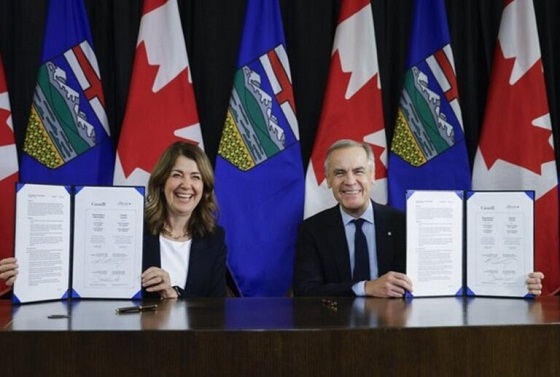
 Energy2 days ago
Energy2 days agoThe Top News Stories That Shaped Canadian Energy in 2025 and Will Continue to Shape Canadian Energy in 2026
-

 Frontier Centre for Public Policy16 hours ago
Frontier Centre for Public Policy16 hours agoTent Cities Were Rare Five Years Ago. Now They’re Everywhere
-

 armed forces17 hours ago
armed forces17 hours agoRemembering Afghanistan and the sacrifices of our military families
-

 Fraser Institute17 hours ago
Fraser Institute17 hours agoHow to talk about housing at the holiday dinner table
-

 Opinion17 hours ago
Opinion17 hours agoPope Leo XIV’s Christmas night homily






